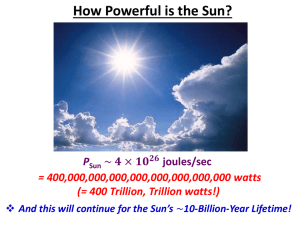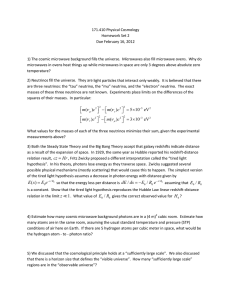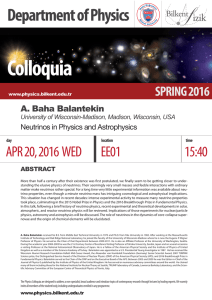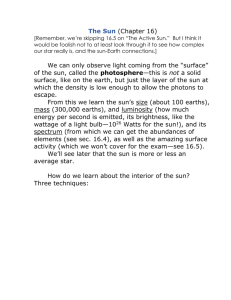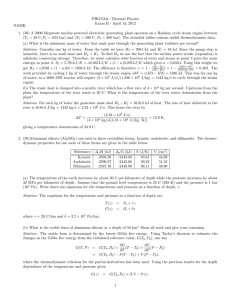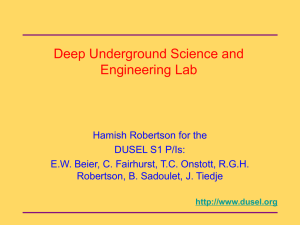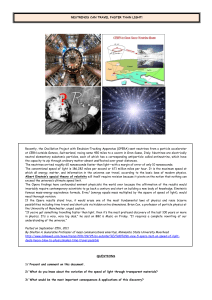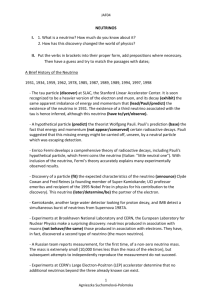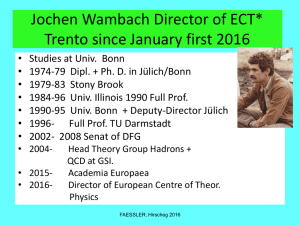abstract4
advertisement
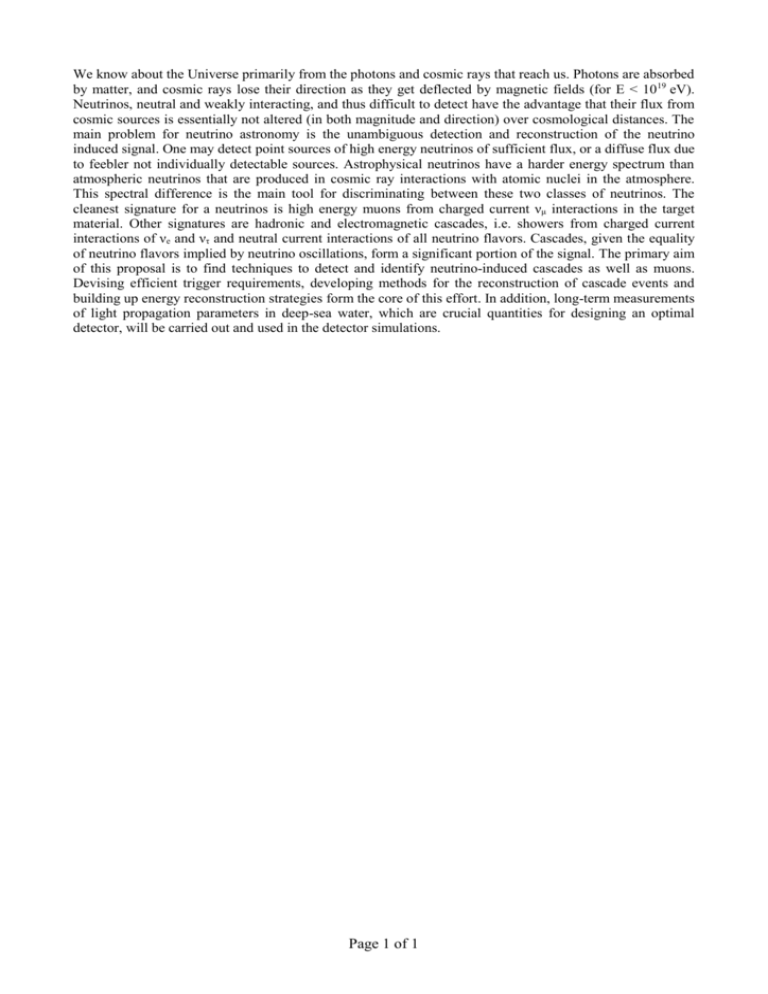
We know about the Universe primarily from the photons and cosmic rays that reach us. Photons are absorbed by matter, and cosmic rays lose their direction as they get deflected by magnetic fields (for E < 1019 eV). Neutrinos, neutral and weakly interacting, and thus difficult to detect have the advantage that their flux from cosmic sources is essentially not altered (in both magnitude and direction) over cosmological distances. The main problem for neutrino astronomy is the unambiguous detection and reconstruction of the neutrino induced signal. One may detect point sources of high energy neutrinos of sufficient flux, or a diffuse flux due to feebler not individually detectable sources. Astrophysical neutrinos have a harder energy spectrum than atmospheric neutrinos that are produced in cosmic ray interactions with atomic nuclei in the atmosphere. This spectral difference is the main tool for discriminating between these two classes of neutrinos. The cleanest signature for a neutrinos is high energy muons from charged current νμ interactions in the target material. Other signatures are hadronic and electromagnetic cascades, i.e. showers from charged current interactions of νe and ντ and neutral current interactions of all neutrino flavors. Cascades, given the equality of neutrino flavors implied by neutrino oscillations, form a significant portion of the signal. The primary aim of this proposal is to find techniques to detect and identify neutrino-induced cascades as well as muons. Devising efficient trigger requirements, developing methods for the reconstruction of cascade events and building up energy reconstruction strategies form the core of this effort. In addition, long-term measurements of light propagation parameters in deep-sea water, which are crucial quantities for designing an optimal detector, will be carried out and used in the detector simulations. Page 1 of 1


